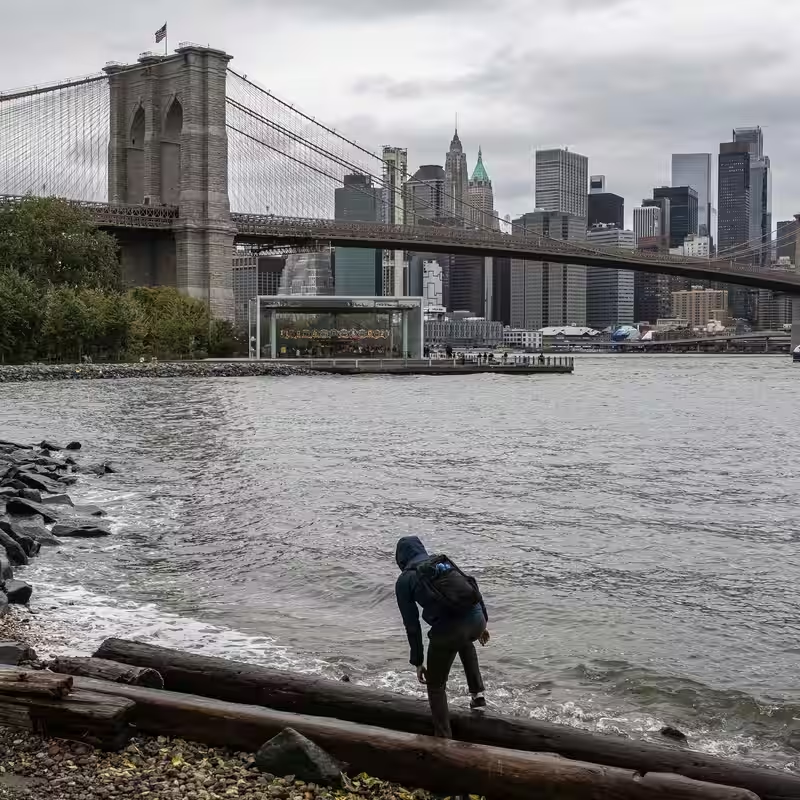A powerful nor’easter is battering the U.S. East Coast, unleashing days of torrential rain, damaging winds, and severe coastal flooding from the Mid-Atlantic to New England. Forecasters warn the storm’s slow movement will prolong the impact through Tuesday, with some areas bracing for up to five inches of rain and wind gusts nearing 60 mph.
Nor’easter Brings Widespread Disruption
The nor’easter, which formed off the Southeast coast on Friday, has already drenched Florida, Georgia, and the Carolinas before marching northward. By Sunday, streets in Georgetown, South Carolina, were submerged, and parts of North Carolina’s Outer Banks saw power outages affecting thousands. The storm’s reach now extends into densely populated corridors including New York City, Philadelphia, and Boston.
“If it doesn’t stop, the water is just going to rise and rise,” said Montas Exume, a 64-year-old Brooklyn resident, as puddles filled potholes in The Hole—a notoriously flood-prone neighborhood straddling Brooklyn and Queens.
Coastal Communities on High Alert
Low-lying coastal zones are bearing the worst of the storm. Delaware, southern New Jersey, and Virginia’s Tidewater region face a high risk of significant coastal flooding and beach erosion. In Avalon, New Jersey, waves between six and ten feet crashed over the Townsends Inlet Bridge, submerging streets and lapping at home steps.
“Our beaches are taking a big hit,” said Mayor John McCorristin. “We were already exposed since we’ve had a few nor’easters, and it’s a little ugly down there.”
Key Impacts by Region
| Region | Expected Rainfall | Wind Gusts | Notable Issues |
|---|---|---|---|
| New York City | 1.5–3 inches | Up to 40 mph inland, 60 mph on Long Island | State of emergency declared; flooding in low-lying areas |
| New Jersey Shore | 2–5 inches | Up to 60 mph | Beach erosion, road closures, bridge overflows |
| Outer Banks, NC | 3–5 inches | 40–55 mph | Power outages (8,000+ customers), shipwreck exposed |
| New England | 2–4 inches | 30–50 mph | School delays, airport disruptions |
Emergency Declarations and Travel Chaos
States are mobilizing rapidly. New York Governor Kathy Hochul declared a state of emergency for NYC and surrounding counties, activating over 7,100 utility workers statewide. New Jersey’s emergency order—issued Saturday—remains in effect through Monday.
Air travel has also been hit hard. By Sunday night, more than 200 flights were delayed and 18 canceled across Newark, LaGuardia, and JFK airports, according to FlightAware.
Meanwhile, NJ Transit suspended portions of its rail service, and several schools in Columbus County, North Carolina, shifted to remote learning due to unsafe road conditions.
Historical Context: Not Sandy, But Still Dangerous
While this nor’easter lacks the catastrophic intensity of Hurricane Sandy (which brought 70–80 mph winds in 2012), its prolonged rainfall and coastal surge pose serious threats—especially to communities already weakened by earlier storms.
In Surf City, North Carolina, the storm even unearthed part of a 1919 shipwreck, a stark reminder of the ocean’s power to both destroy and reveal.
What’s Next?
The storm is expected to linger through Tuesday, with the heaviest impacts along the immediate coastline. Residents are urged to avoid flooded roads, secure outdoor items, and monitor local emergency alerts.
As one Long Island carpenter, Conor Rogers, put it while prepping his backyard: “With this low-pressure system, this one’s going to come up on us.” His Monday plan? “Eat frozen food and watch football.”




